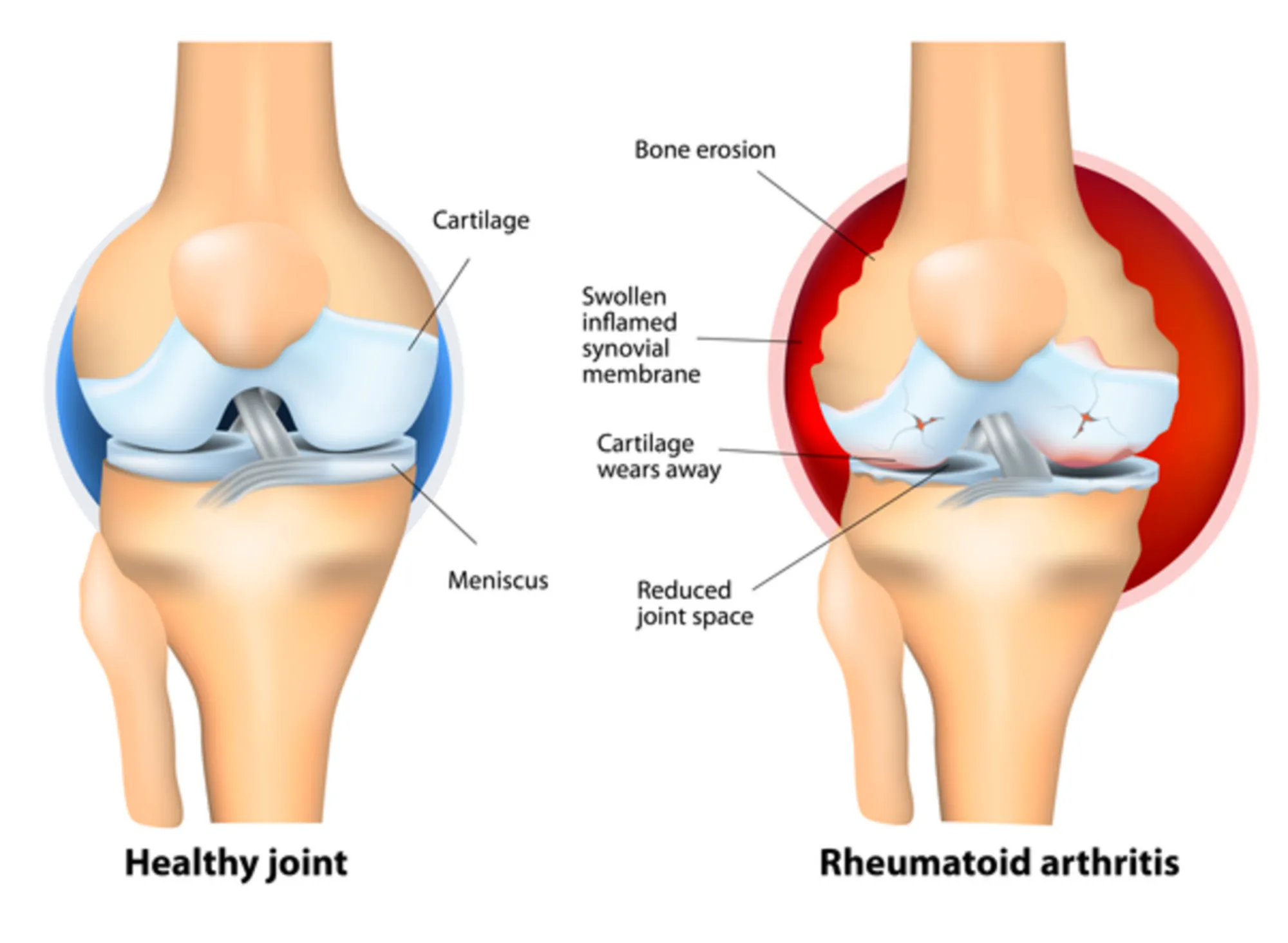It's a privilege to share one of the research, I and my team of researchers executed last year 2021. I always believe in finding new and novel ways to ameliorate problem usually associated with old aging process, diseases that can be as a result of environmental factors or influence or Posing to be a serious challenge in treatment and eradication.
Research is one the best way all this can be achieved. Though it highly demanding both financially and Intellectually, regardless, I always believe it is the price we have to pay for a breakthrough. Most of my research works are neither funded by any NGO or any institution, they are all personally funded.
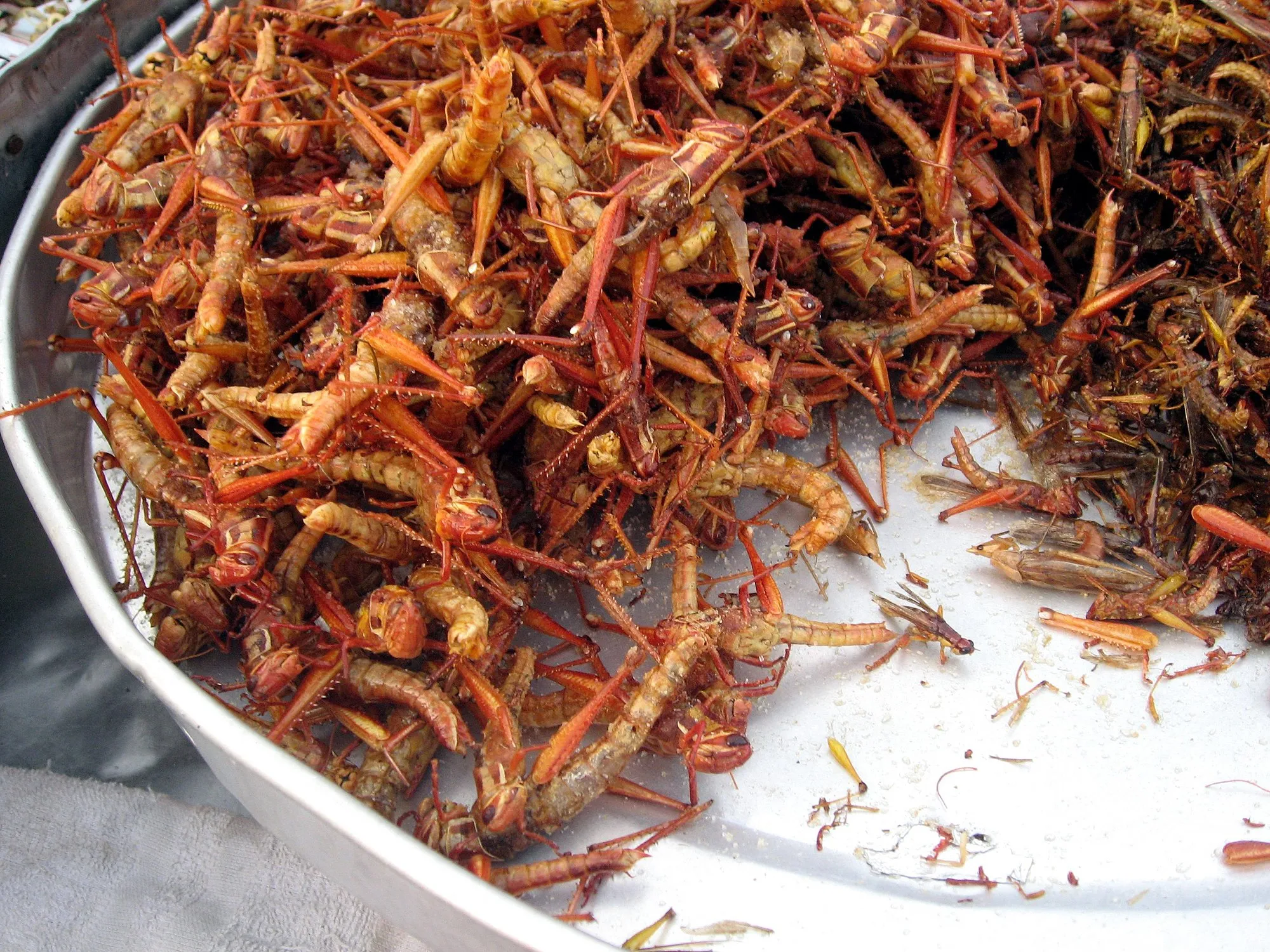 Fried grasshoppers meal
Fried grasshoppers meal
I feel at home spreading some of our research findings here after a final year student messaged me on WhatsApp social media to appreciate me for how one of the article I wrote over 4 years now about plastination helped him in writing and defending his final year BSC project. According to him, he has been in dare need of pictures and a well simplified and detailed article on plastination. Fortunately for him, in the course of surfing the internet to get images and materials, he stumbled on the article.
His testimony really made me feel elated and also made realize that the world is noticing us (HIVE). This simply means that most of the articles posted here on HIVE can be easily discovered through most search engines. I only imagined if that article was not well written, he would probably have been disappointed. I am sharing this story to help reawaken the consciousness of most authors here, what we communicate here go a long way, we might not know at the moment. Enough of My story, lets quickly talk about our research. As usual, I will begin with the abstract of the work.
Abstract
Arthritis is fast becoming chronic disease of rheological and compromised public health consequences, most especially on the quality of human corporate life and existence. The aim of this current study is simply to consider the level of awareness of the therapeutic effects, if any, of Grasshoppers on Arthritis. To some ethnic groups, insects provide 5-10% of protein, fat, calories, vitamins and minerals per year. This work’s main objective is to critically appraise the level of awareness of the food value of Grasshoppers and its therapeutic potentials on arthritis patients. As useful information on these parameters could suggest the fountain and the basis of these claims and assertions. The method adopted in this current study randomly assigned and administered informed consent questionnaires to unisex participants attending some four hospitals’ orthopedic departments within F.C.T. Abuja in Nigeria. Also they were fed with 25g of fifteen roasted grasshopper daily as afternoon snacks for eight months continuously without break. Using the unpaired t-test, we observed that the percentage curative rate in these unisex volunteers, though very high, showed no significant difference among the male and female participants aged 40 to 80 years (P>0.05). Majority of those interviewed within the community randomly selected actually seem to know about the importance and the usefulness of Grasshopper as far as therapeutic and food potentials are concerned.
Arthritis is a medical condition that usually results to pain in various joints of the body. It is usually an inflammation in areas of the joints and it's is always associated with pain. Research has undoubtedly shown that is mostly common among adults between the ages of 65years or more. The most common one is the Rheumatoid arthritis and osteoarthritis.
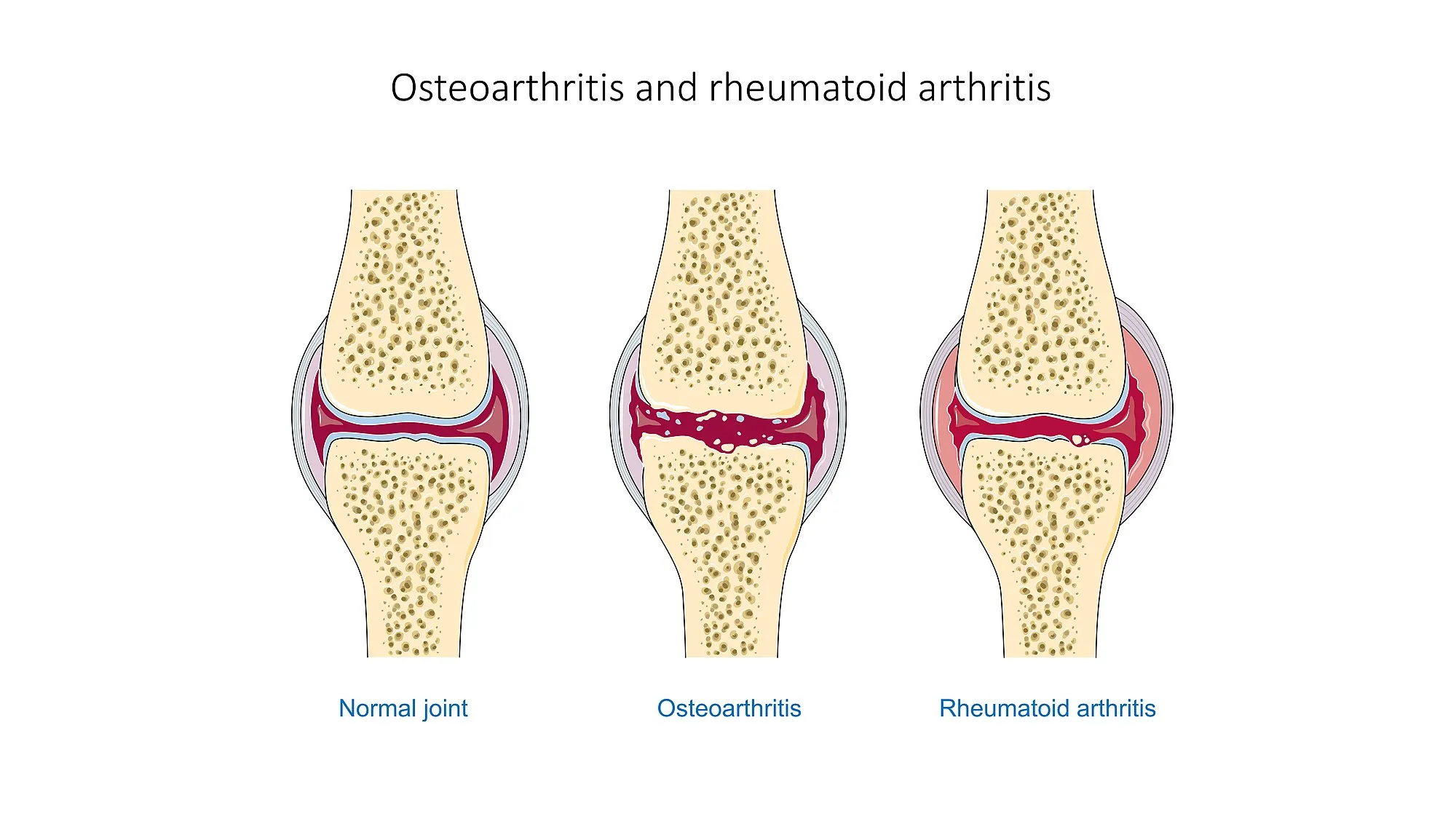 Rheumatoid arthritis and osteoarthritis
Rheumatoid arthritis and osteoarthritis
Naturally, the joints are made up of shock absorbers medically referred to as bursa, as well as cartilages, tendons and ligaments. As you walk and move about, these bursa and others ensure that your bones do not touch each other. Even when you jump or run, they always take the impact. Over time, they may wear off due to auto immune reactions or diseases affecting the joints and once this happens, the bones begin to grind against each other resulting to severe pain while walking.
Sometimes it can lead to stiffness of the joints. By nature, the joints are meant to be freely movable. Anything that will make them stiff can lead to problem and subsequent inflammation. This is why exercise is recommended for all, it will ensure that your muscles and joints are in shape at all times, especially in the older ones who have higher tendency of developing the disease.
Human population is growing exponentially and according to the opinion of specialists, we are very close to the global food crisis and famine. In Nigeria for example, some insects are currently being used as a source of nutrients and majorly source of proteins for some who cannot afford daily square meal. I personally have tasted variety of insects e.g sargo worms. I have earlier written a article on their health benefits and can be accessed here. Naturally these insects have huge health benefits and our curiousity led us to investigate that of grasshopper that are largely consumed in Nigeria.
Insects are gaining more and more attention worldwide due to many ways of their exploitation. Many articles deal with insects in relation to developing countries, harvesting insects in nature and solving the problem of famine, as in some cultures, insects present an important seasonal source of proteins and are a common part of the menu of a substantial part of human population, especially of Asian, African (Nigeria in this case), Central American and South American cultures. In these areas, insect’s consumption is associated, by no means always, with a poor man’s subsistence.
However, insects are not only an emergency resource but are appreciated as palatable and tasty and their popularity is also increasing in Westernized countries as a new, interesting food item. Despite the fact that social, economic and nutritional values of edible insects are often marginalized, more than 1500 species of edible insects in 300 ethnic groups in 113 countries have been recorded by various authors. To some ethnic groups insects provide 5 – 10% of protein, fat, calories, vitamins and minerals per year. Harvesting insects as food, like any other food hunting and collecting activities, has the potential to become a threat to both the target species and the environment.
Ramos-Elorduy in his research reported that the populations of some of the 30 edible insect species in the Mexican town of Tulancalo have declined because of over exploitation and this situation has led to a call for regulation of edible insects’ exploitation in Mexico to ensure better management, production and conservation. Furthermore, potentially edible insects may contain higher than acceptable levels of chemicals due to frequent usage of pesticides, which also applies to some other parts of the world.
From this point of view it is obvious that especially in Europe it is not possible to collect insects for eating purposes in nature. Previously, insects were eaten alive. Later they were served in some cultures also cooked, roasted or boiled (either insects per se or insect additives to food) or using other culinary techniques.
As the time went by, in some parts of the world insects were given the position of sophisticated gourmet dishes, offered in experimental restaurants, having totally changed the look and presenting them as much more attractive and savory. However, opinions differ on how the food from insect should look like. Eating insects whole or their body parts can be difficult for those brought up in Western societies. Some insect eaters on the contrary require visible insects in food, preferably whole bodies, which is an example of a unique Asian culture, whose people eat them for their delightful taste and also enjoy the process of collecting them.
On the other hand, people especially in areas where insects were not consumed for a long time prefer incorporating insects into the food in a way they are not visible so they accept only the idea that the insects have a nutritional value.
This shows that people especially in North America and Europe can eat insects if they do not know what they are eating, with the exception of individuals who have allergic reactions. These factors suggest that insect transformation will facilitate its consumption in the future. In practice, dried insects may be crushed or pulverized, and raw or boiled insects ground or mashed, making their insect form unrecognizable.
In the study done by Min-Ji Kim et al, 2019,they isolated one of the active molecule found in grasshopper that is believed to be responsible for the antiinflammatory potential possessed by grasshopper meal.
In this study, we first isolated Grasshopper ketone (GK) from S. fulvellum, an ethanol extract of brown algae, and demonstrated that GK significantly inhibited major proinflammatory cytokines and NO production and had an effective anti-inflammatory activity. Moreover, we demonstrated that GK can regulate the expression of pro-inflammatory cytokines, COX-2 and iNOS via the NF-κB signaling pathway
COX is (Cyclogenase 2), Nitric Oxide (NO), Cytokines etc are molecule that are implicated in inflammatory reactions, in essence, their inhibition by will drastically reduce the pain associated with also arthritis.
Grasshopper is both commonly eaten as a delicacy and an excellent source of protein and is consumed for medicinal purposes. These insects are typically collected, dried in the sun, and then grounded into powder. The powder can then be turned into a paste when mixed with water and ash and applied to the forehead to alleviate the pain of violent headaches.
Statement of problem and short research methodology
Over the years, arthritis has been a disease that affects humans. Lasting solution through the use of orthodox drugs has proved abortive. There is need to look inwards by harvesting what the nature has for us which culminates into carrying out a research to identify the curative agent in grasshopper that has therapeutic effect on the disease.
Our research was aimed at providing new local compounds of natural origin which could be used as medicine or evaluated for subsequent drug design. As such some arthritis volunteers, whose ages ranged between 40-80 years, were fed with 25g of fifteen roasted grasshopper daily as afternoon snacks for eight months continuously without break.
Modern drugs discovery process involves the search of biologically active compounds derived from different sources. According to the knowledge on drugs of natural origin, active compounds were discovered in plants, insects and natural products and have been used in medicine since ages. The current trend in research is to identify biologically active compounds in insects. In the last decade an impressive number of active compounds were isolated from insects, especially peptides with miotropic and antifungal properties.
Grasshoppers are also used medicinally. Some report has it that they are said to serve as diuretic (has effects on the regulation of absorption and reabsorption of water in the kidney) to treat kidney diseases, to reduce swelling, and to relieve the pain of intestinal disorders when they are consumed.
Recently, insects and their metabolites are now studied in-depth, thus leading to the establishment Metabolomics. Metabolomics, as a part of functional genomics, plays an important role in medically oriented research on insects and plants. It is a relatively new discipline of bioscience aiming at understanding of the metabolic state of a biological system and in this case, our point of focus is on insects such as the grasshopper. Not much is known about this field of study, so in essence, we also went further to investigate how well people are aware of this field by incorporating it as a question in the questionnaire share among the voluntary participants of our study.
Our Hypothesis testing
Ho: There is no significant difference in the effective therapeutic value of grasshopper between adult Male and Female hospital attendee at the orthopaedic departments of the four hospitals within FCT Abuja.
Ha: Significant difference exists in the effective therapeutic value of grasshopper between adult Male and Female hospital attendee at the orthopaedic departments of the four hospitals within FCT Abuja.
Just so you probably don't get lost here. Hypothesis testing is simply the process of making a choice between two conflicting hypotheses and by further clarity, "Ho" in another term means a null hypothesis while "Ha" means alternative hypothesis.
Some of the answers of the key research questions randomly administered to the patients at the various orthopaedic departments are as shown in the result table below.
Results and findings
Table-1: Showing Curative Rates of Grasshoppers on Unisex Volunteers Arthritis Patients Attending Four Hospitals in Abuja.

Standard Deviation, SD, = √ ∑(X-X)2÷ (n -1) T test = X1 – X2 / SE = 0.33 T tabulated = 2.1.
T Calculated at six degrees of freedom = 0.33 (Not significant). Since it is not significant, Hence, we have no reason to reject the null hypothesis thus it is retained.
Table A; which showed the curative rates of the Grasshoppers consumed by the male volunteers in the four hospitals viz;- Hospital A 48/50 (96%), Hospital B 67/70 (95%), Hospital C 10/11 (88%), and Hospital D 18/19 (94%), While for the females volunteers the curative rates of the Grasshoppers consumed in the four hospitals viz;- Hospital A 23/25 (92%), Hospital B 20/20 (100%), Hospital C 15/17(88%), and Hospital D 13/13 (100%), With these figures, It is suggested that grasshopper consumption could be the right therapeutic remedy for patients suffering from arthritis. As the positive cure response rate ranged from 88% to 100% unisex.
Table-2: A chart which shows the average cure rate of grasshoppers on unisex volunteer’s arthritis patient in four hospitals in Abuja
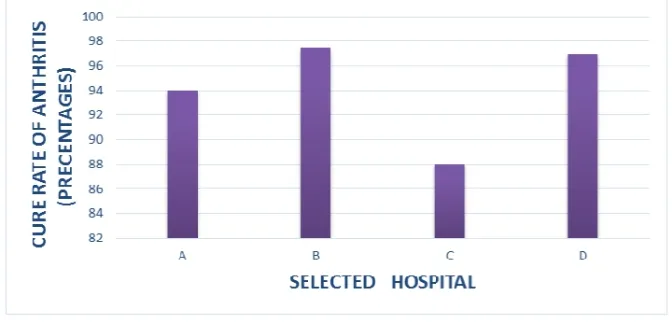
We went further to get data on how knowledgeable some individuals are about the concept of metabolomics and our findings are summarized in the table below.
Table-3: Level of Awareness of the Therapeutic/Food value of Grasshopper among males

Table-4: Level of Awareness of the Therapeutic/Food value of Grasshopper among Females

Metabolomics, as a part of functional genomics, plays an important role in medically oriented research on insects and plants. These identified metabolites might next be recognized as specific biomarkers or so-called “lead” structures for rational drug design for determining a wide range of chemical structures, such as amino acids, carbohydrates, sugars, fatty acids and lipids, in complex matrices.
Lead structures or molecules are the precursor for virtually all unique drugs. Before any drug is manufactured, there must be a lead molecule that was discovered.The grasshopper could in future be used to determine volatile compounds as well as those, which could easily be derivatized. Unfortunately, only relatively few volunteers were aware of this fact.
Table-5: Chart showing the level of awareness of therapeutic/food value of grasshoppers among females among selected hospitals
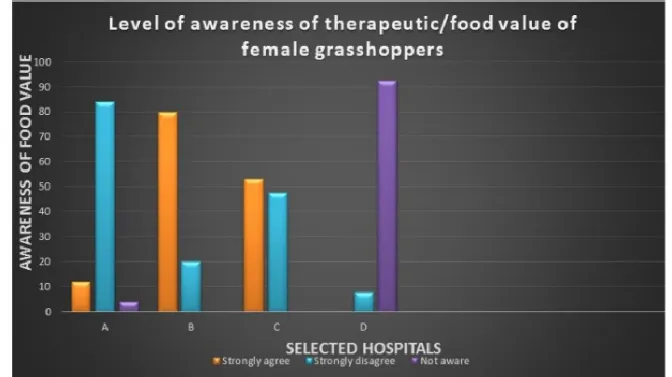
For the sake of future research, the grasshopper importance in providing lasting relieve and cure for arthritis must be emphasized, deeply researched and its useful metabolites identified for orthodox medicine design. In table 3, apart from the relatively low level of the metabolomics awareness level, most of them i.e. the volunteers knew about the relatively high food value of insects as typified by grasshopper as they all responded well and acknowledged that grasshopper contain high levels of amino acids, carbohydrates, sugars, fatty acids and lipids. For this reason they believe it could be used as food alternatives.
Table-6: A chart showing the level of awareness of therapeutic/food value of grasshoppers among males in selected hospitals
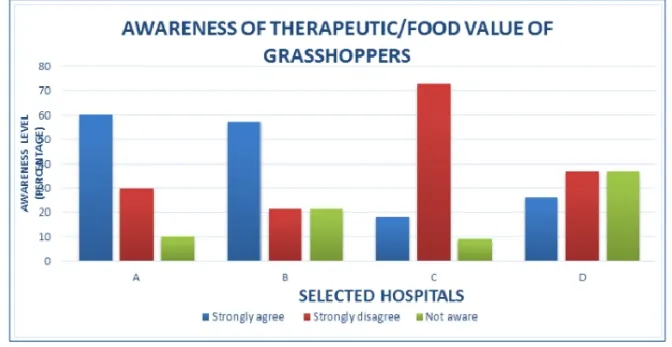
As a way of conclusion, grasshopper could be a real source for future drug design against arthritis which is a disease that is currently difficult to treat. In the second part of the work we intend to conduct a deeper scientific research, where full analysis of the food components proportions either in the exoskeleton or other parts of the insect/Grasshopper shall be determined quantitatively.
We couldn't go deep as regarding the e quantitative aspect of the research due to financial constraints but we are hoping to do so soonest once the funds are available. In the mean time, we make do with what we have and providing data that can be valuable to pharmaceutical and health industries. Areas I feel also worth exploring is trying to find out the mechanism and principles behind the therapeutic effect of this insect. A gap in knowledge that can be filled through further scientific and advanced research.
The article is under Open access and can be downloaded freely on my research gate profile here, click the more section and you are good to go.
All images used in this research work are free for use, remember to give credits to whom it is due, (us). Detailed research methodology and materials used in this research can be found in the original work.
Until I come your way again, stay awesome.
References •Therapeutic arthropods and other, largely terrestrial, folk-medicinally important invertebrates: a comparative survey and review •Why eating ants, grasshoppers, silkworms protect against cancer •Anti-Inflammatory Effects of Grasshopper Ketone from Sargassum fulvellum Ethanol Extract on Lipopolysaccharide-Induced Inflammatory Responses in RAW 264.7 Cells •Could Grasshoppers Be a Nutritive Meal?
Return from Original Research: Investigating The Therapeutic potential of Locally Consumed Grasshopper in Abuja, Nigeria, against Arthritis disease to cyprianj's Web3 Blog

